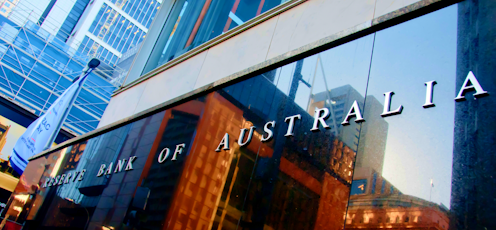The RBA has lost some patience on rates, but it isn't rushing to push them up: here's why
- Written by Isaac Gross, Lecturer in Economics, Monash University

It is coming up to 18 months since Australia’s Reserve Bank last cut its cash rate.
And what it did then was merely a further cut, from an unprecedented low of 0.25% to a fresh unprecedented low of 0.10%
Since it last changed the direction of rates (started cutting instead of hiking) it has been 10 years and five months.
Which is why it has been telling anyone who asked (and repeatedly using the phrase in its official communications) that it is “prepared to be patient” before changing again. It wants to be sure conditions necessitate such a move.





